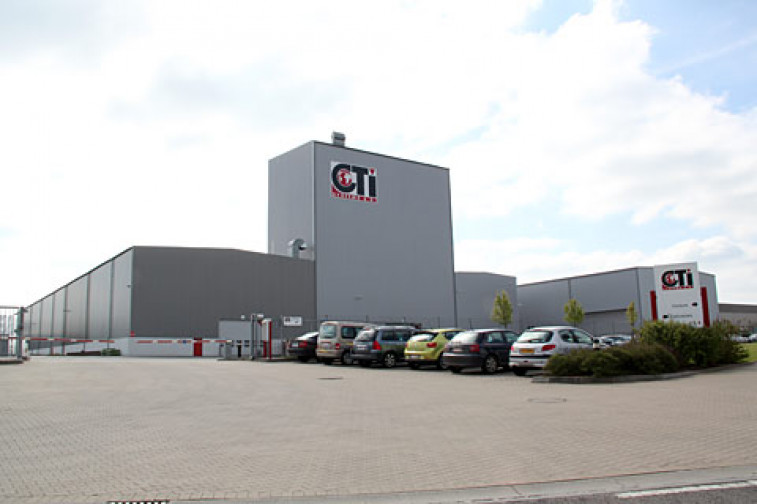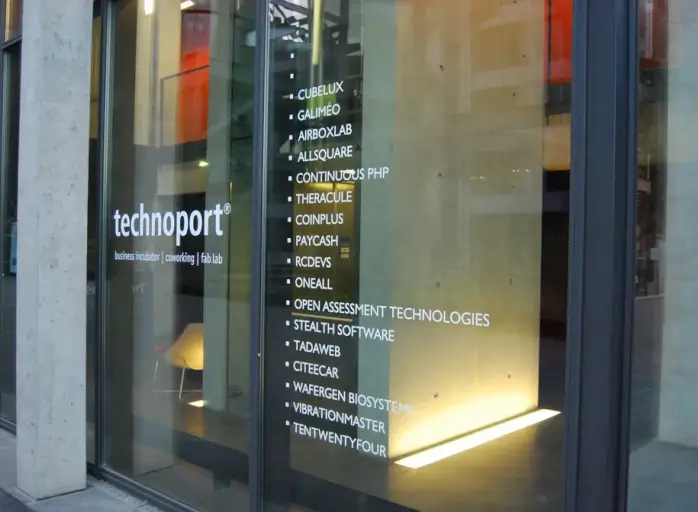

CTI Systems on a “good path” towards further digitalisation
CTI Systems recently completed the L-DIH digital maturity assessment, a step well aligned with its roadmap and the NIS 2.0 cybersecurity directive in force since 2023.
 Abigail Okorodus
Abigail Okorodus
13/06/2024
Established in 1962 in Clervaux, CTI Systems has stood the test of time and carved a niche for itself, particularly as a solution provider for the handling of heavy loads. CTI’s portfolio includes automated heavy load material handling solutions, special aircraft servicing systems, various types of storage systems, surface treatment plants, and integrated assembly lines.
“I’ve been working for CTI since 2008,” explains Tobias Thielen, Development Manager Digital Solutions and IT Security Officer. Prior to taking on this role, he wore other hats within the company, starting out as a software developer and then IT manager for six years. “Aviation accounts for a large part of our business,” Mr Thielen explains. At the same time, the company is renowned as a leading partner for its project design and system integration expertise when it comes to handling or storing heavy loads. “Most hangars worldwide are equipped with our customised Teleplatform systems, and we have a global market share of around 90% over the last twenty years.” he adds.
Following initial contact with Luxinnovation, coordinator of the Luxembourg Digital Innovation Hub (L-DIH), CTI Systems carried out an initial digital maturity assessment. “We wanted to know our level of digitalisation and how we compare to other companies,” says Mr Thielen.
The assessment by the L-DIH provided valuable insights. “It showed us that we are on a good path but also highlighted areas for improvement. It has given us confidence in our planning and the direction we are heading,” Mr Thielen notes. The one-day assessment took place at the company premises. It involved Luxinnovation, the University of Luxembourg and key CTI teams from accounting, IT and production.
“Thanks to the digital maturity assessment, we now have statistical figures that show where we are in the industry,” Mr Thielen asserts. “It not only validated our efforts but also provided a roadmap for future initiatives. This is also beneficial for our colleagues working on internal digital projects, as they now have arguments to present to the board and can say: here are the results, these are the plans, and these are the areas where we could get better.”
Like most companies undergoing a digital transition, Mr Thielen mentions that a challenge has been getting users to embrace new digital solutions. “About five years ago, we introduced automatic scanning and OCR for invoices. Initially, there was scepticism, but gradually, users began to see the benefits.”
The digital maturity assessment helped identify ways to involve employees more in the digital transformation journey, and some training and awareness sessions are planned to get employees closer to the solutions.
For Mr Thielen, putting in place “small and easy processes” at the beginning is key. He explains: “We are currently talking about our document management system and leave request form via the new workflow system that everybody needs to use to request holidays. This is an idea to get users more used to the system. Then we will move to other things like purchase orders and digitised HR onboarding.”
Several other projects and digital workflows are planned for the next 12 months as part of the CTI’s internal digitalisation strategy.
Part of the company’s roadmap includes developing its software products and strengthening IT security. Mr Thielen emphasises the importance of integrating security measures into every facet of digital transformation. “Most companies want to be more involved in the digital world, which is great, but you also need to pay attention to IT security when you go the digitalisation path,” he points out.
The introduction of the EU-wide NIS 2.0 cybersecurity directive in 2023 further makes this topic non-negotiable. “Many companies that have never been targeted by any regulation before now have to comply with this new directive. This means that a lot of companies, with little or no existing IT standards, now have to start thinking about their digital security,” he cautions.
With its digital roadmap now secured and it maturity verified, Mr Thielen asserts that CTI is on track to ensure its compliance with the directive in October 2024.
“We are one of the companies that were affected, and that’s a direct benefit for us because we have to comply. We are also working towards ISO 27001 certification, demonstrating that we meet all IT security standards. We aim to become even more digital than we are now and be in the top companies in our sector for digitalisation. We have made a roadmap for it, we have set up a team, and we are pretty sure that we will achieve this.”
“I’ve been working for CTI since 2008,” explains Tobias Thielen, Development Manager Digital Solutions and IT Security Officer. Prior to taking on this role, he wore other hats within the company, starting out as a software developer and then IT manager for six years. “Aviation accounts for a large part of our business,” Mr Thielen explains. At the same time, the company is renowned as a leading partner for its project design and system integration expertise when it comes to handling or storing heavy loads. “Most hangars worldwide are equipped with our customised Teleplatform systems, and we have a global market share of around 90% over the last twenty years.” he adds.
Benchmarking digital maturity
Following initial contact with Luxinnovation, coordinator of the Luxembourg Digital Innovation Hub (L-DIH), CTI Systems carried out an initial digital maturity assessment. “We wanted to know our level of digitalisation and how we compare to other companies,” says Mr Thielen.
The assessment by the L-DIH provided valuable insights. “It showed us that we are on a good path but also highlighted areas for improvement. It has given us confidence in our planning and the direction we are heading,” Mr Thielen notes. The one-day assessment took place at the company premises. It involved Luxinnovation, the University of Luxembourg and key CTI teams from accounting, IT and production.
“Thanks to the digital maturity assessment, we now have statistical figures that show where we are in the industry,” Mr Thielen asserts. “It not only validated our efforts but also provided a roadmap for future initiatives. This is also beneficial for our colleagues working on internal digital projects, as they now have arguments to present to the board and can say: here are the results, these are the plans, and these are the areas where we could get better.”
Step-by-step user onboarding
Like most companies undergoing a digital transition, Mr Thielen mentions that a challenge has been getting users to embrace new digital solutions. “About five years ago, we introduced automatic scanning and OCR for invoices. Initially, there was scepticism, but gradually, users began to see the benefits.”
The digital maturity assessment helped identify ways to involve employees more in the digital transformation journey, and some training and awareness sessions are planned to get employees closer to the solutions.
For Mr Thielen, putting in place “small and easy processes” at the beginning is key. He explains: “We are currently talking about our document management system and leave request form via the new workflow system that everybody needs to use to request holidays. This is an idea to get users more used to the system. Then we will move to other things like purchase orders and digitised HR onboarding.”
Several other projects and digital workflows are planned for the next 12 months as part of the CTI’s internal digitalisation strategy.
IT security: A relevant topic
Part of the company’s roadmap includes developing its software products and strengthening IT security. Mr Thielen emphasises the importance of integrating security measures into every facet of digital transformation. “Most companies want to be more involved in the digital world, which is great, but you also need to pay attention to IT security when you go the digitalisation path,” he points out.
The introduction of the EU-wide NIS 2.0 cybersecurity directive in 2023 further makes this topic non-negotiable. “Many companies that have never been targeted by any regulation before now have to comply with this new directive. This means that a lot of companies, with little or no existing IT standards, now have to start thinking about their digital security,” he cautions.
With its digital roadmap now secured and it maturity verified, Mr Thielen asserts that CTI is on track to ensure its compliance with the directive in October 2024.
“We are one of the companies that were affected, and that’s a direct benefit for us because we have to comply. We are also working towards ISO 27001 certification, demonstrating that we meet all IT security standards. We aim to become even more digital than we are now and be in the top companies in our sector for digitalisation. We have made a roadmap for it, we have set up a team, and we are pretty sure that we will achieve this.”







